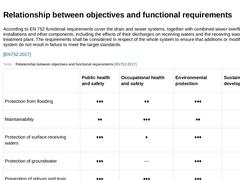
|
According to EN 752 functional requirements cover the drain and sewer systems, together with combined sewer overflows, pumping installations and other components, including the effects of their discharges on receiving waters and the receiving wastewater treatment plant. The requirements shall be considered in respect of the whole system to ensure that additions or modifications to the system do not result in failure to meet the target standards. [… |
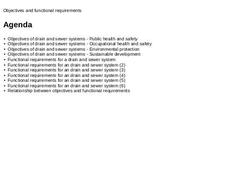
|
|
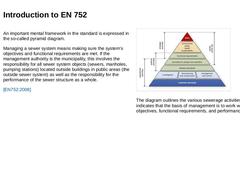
|
An important mental framework in the standard is expressed in the so-called pyramid diagram. Managing a sewer system means making sure the system’s objectives and functional requirements are met. If the management authority is the municipality, this involves the responsibility for all sewer system objects (sewers, manholes, pumping stations) located outside buildings in public areas (the outside sewer system) as well as the responsibility for the … |
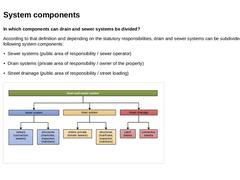
|
In which components can drain and sewer systems be divided? According to that definition and depending on the statutory responsibilities, drain and sewer systems can be subdivided into the following system components: -
Sewer systems (public area of responsibility / sewer operator)
-
Drain systems (private area of responsibility / owner of the property)
-
Street drainage (public area of responsibility / road authority)
(Image: Allocation of the used terms) |
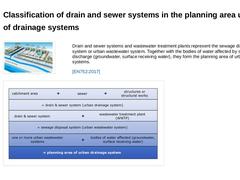
|
(Image: Planning area of urban drainage systems according to DIN EN 752) Drain and sewer systems and wastewater treatment plants represent the sewage disposal system or urban wastewater system. Together with the bodies of water affected by sewage discharge (groundwater, surface receiving water), they form the planning area of urban drainage systems. [EN752:2017] (Image: Planning area of urban drainage systems according to DIN EN 752) |
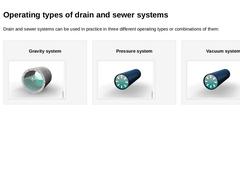
|
Drain and sewer systems can be used in practice in three different operating types or combinations of them: Gravity system (Image: Gravity pipeline) Pressure system (Image: Pressure pipeline) Vacuum system (Image: Vacuum pipeline) |
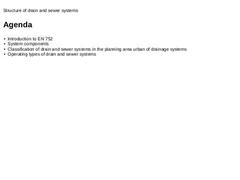
|
|
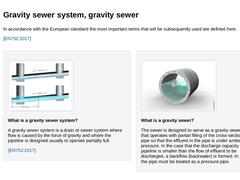
|
(Image: Gravity sewer) What is a gravity sewer system? A gravity sewer system is a drain or sewer system where flow is caused by the force of gravity and where the pipeline is designed usually to operate partially full. [EN752:2017] (Image: Gravity pipeline) What is a gravity sewer? The sewer is designed to serve as a gravity sewer, i.e. one that operates with partial filling of the cross-section of the pipe so that the effluent in the pipe is under ambient … |
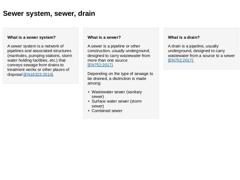
|
What is a sewer system? A sewer system is a network of pipelines and associated structures (manholes, pumping stations, storm water holding facilities, etc.) that conveys sewage from drains to treatment works or other places of disposal [EN16323:2014]. What is a sewer? A sewer is a pipeline or other construction, usually underground, designed to carry wastewater from more than one source [EN752:2017]. Depending on the type of sewage to be drained, a … |
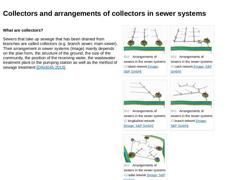
|
What are collectors? Sewers that take up sewage that has been drained from branches are called collectors (e.g. branch sewer, main sewer). Their arrangement in sewer systems (Image) mainly depends on the plan form, the structure of the ground, the size of the community, the position of the receiving water, the wastewater treatment plant or the pumping station as well as the method of sewage treatment [DIN4045:2016]. (Image: Arrangements of sewers … |
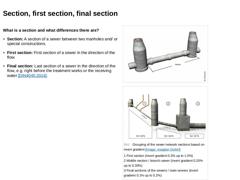
|
What is a section and what differences there are? -
Section: A section of a sewer between two manholes and/ or special constructions.
-
First section: First section of a sewer in the direction of the flow.
-
Final section: Last section of a sewer in the direction of the flow, e.g. right before the treatment works or the receiving water [DIN4045:2016].
(Image: Principle sketch of a section) (Image: Grouping of the sewer network sections) |
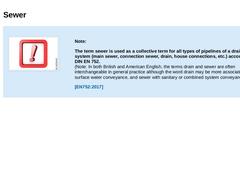
|
Note: The term sewer is used as a collective term for all types of pipelines of a drainage system (main sewer, connection sewer, drain, house connections, etc.).
(Note: In both British and American English, the terms drain and sewer are often interchangeable in general practice although the word drain may be more associated with surface water conveyance, and sewer with sanitary or combined system conveyance). [EN752:2017] |
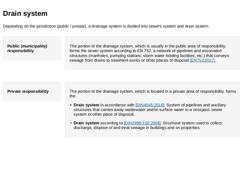
|
Depending on the jurisdiction (public / private), a drainage system is divided into sewers system and drain system. Public (municipality) responsibility The portion of the drainage system, which is usually in the public area of responsibility, forms the sewer system according to EN 752: a network of pipelines and associated structures (manholes, pumping stations, storm water holding facilities, etc.) that conveys sewage from drains to treatment works … |
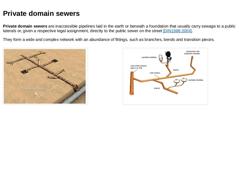
|
Private domain sewers are inaccessible pipelines laid in the earth or beneath a foundation that usually carry sewage to a public laterals or, given a respective legal assignment, directly to the public sewer on the street [DIN1986:2004]. They form a wide and complex network with an abundance of fittings, such as branches, bends and transition pieces. (Image: Position of private domain sewers under buildings) (Image: Private domain sewers with connected … |
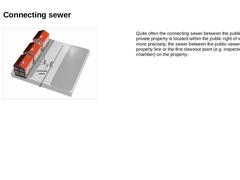
|
(Image: Connection variant of laterals to manholes) Quite often the connecting sewer between the public and private property is located within the public right of way - or more precisely, the sewer between the public sewer and the property line or the first cleanout point (e.g. inspection chamber) on the property. |
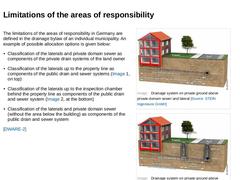
|
The limitations of the areas of responsibility in Germany are defined in the drainage bylaw of an individual municipality. An example of possible allocation options is given below: -
Classification of the laterals and private domain sewer as components of the private drain systems of the land owner
-
Classification of the laterals up to the property line as components of the public drain and sewer systems (Image above 1, on top)
-
Classification of the …
|
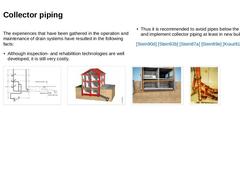
|
The experiences that have been gathered in the operation and maintenance of drain systems have resulted in the following facts: -
Although inspection- and rehabilition technologies are well developed, it is still very costly.
-
Thus it is recommended to avoid pipes below the building and implement collector piping at least in new buildings.
[Stein90d] [Stein92b] [Stein87a] [Stein89e] [Kraut91] [Schwe90] (Image: Sketch of a collector pipe with sewage … |
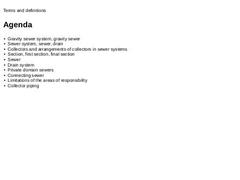
|
|
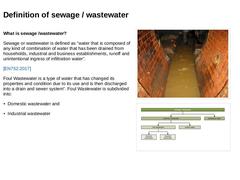
|
What is sewage /wastewater? Sewage or wastewater is defined as “water that is composed of any kind of combination of water that has been drained from households, industrial and business establishments, runoff and unintentional ingress of infiltration water”. [EN752:2017] Foul Wastewater is a type of water that has changed its properties and condition due to its use and is then discharged into a drain and sewer system”. Foul Wastewater is subdivided … |
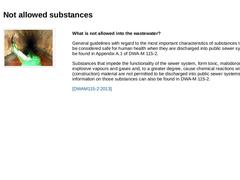
|
(Image: Inspection with a tracer) What is not allowed into the wastewater? General guidelines with regard to the most important characteristics of substances that may still be considered safe for human health when they are discharged into public sewer systems can be found in Appendix A.1 of DWA-M 115-2. Substances that impede the functionality of the sewer system, form toxic, malodorous or explosive vapours and gases and, to a greater degree, cause … |
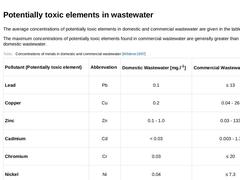
|
The average concentrations of potentially toxic elements in domestic and commercial wastewater are given in the table. The maximum concentrations of potentially toxic elements found in commercial wastewater are generally greater than those in domestic wastewater. (Table: Concentrations of metals in domestic and commercial wastewater) |
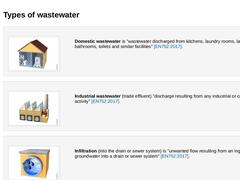
|
(Image: Domestic wastewater) Domestic wastewater is "wastewater discharged from kitchens, laundry rooms, lavatories, bathrooms, toilets and similar facilities" [EN752:2017]. (Image: Industrial (commercial) waste water) Industrial wastewater (trade effluent) "discharge resulting from any industrial or commercial activity" [EN752:2017]. (Image: Infiltration of extraneous water) Infiltration (into the drain or sewer system) is "unwanted flow resulting from … |
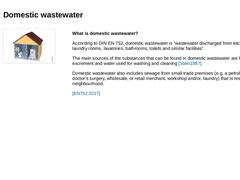
|
(Image: Domestic wastewater) What is domestic wastewater? According to DIN EN 752, domestic wastewater is “wastewater discharged from kitchens, laundry rooms, lavatories, bathrooms, toilets and similar facilities”. The main sources of the substances that can be found in domestic wastewater are human excrement and water used for washing and cleaning [Stein1987]. Domestic wastewater also includes sewage from small trade premises (e.g. a petrol station, … |
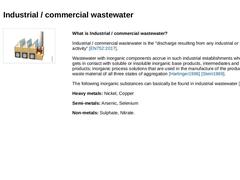
|
(Image: Industrial (commercial) waste water) What is Industrial / commercial wastewater? Industrial / commercial wastewater is the “discharge resulting from any industrial or commercial activity” [EN752:2017]. Wastewater with inorganic components accrue in such industrial establishments where water gets in contact with soluble or insoluble inorganic base products, intermediates and end products; inorganic process solutions that are used in the manufacture … |
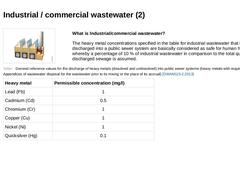
|
(Image: Industrial (commercial) waste water) What is Industrial/commercial wastewater? The heavy metal concentrations specified in the table for industrial wastewater that is to be discharged into a public sewer system are basically considered as safe for human health, whereby a percentage of 10 % of industrial wastewater in comparison to the total quantity of discharged sewage is assumed. (Table: General reference values for the discharge of heavy … |